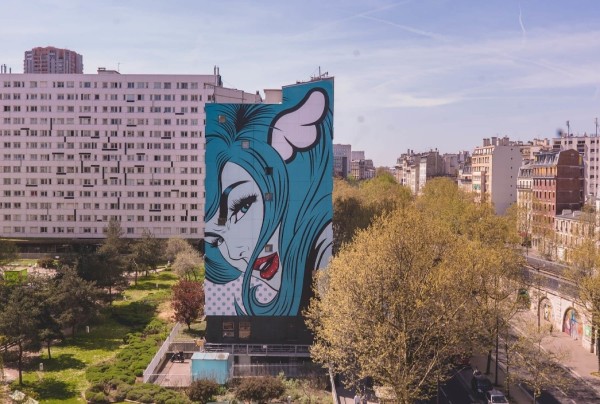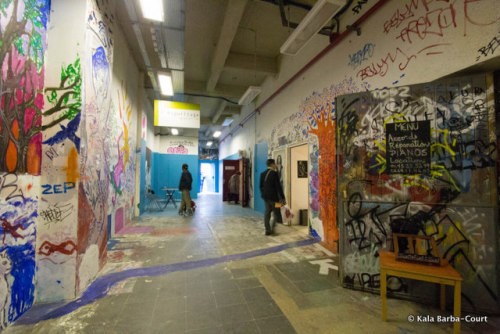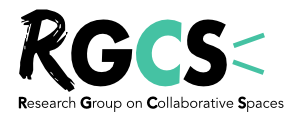By Renée Zachariou
The promise was enticing, and the menu quite mysterious: OWEE (Open Walked Event-based Experimentations) is a research protocol conducted by international researchers. After several experiments all over the world (in Tokyo and London), a tour in the 13th district of Paris was concocted, open to all. It is difficult to give a precise definition of OWEE without giving in to tautology: it is an experiment, while walking, while seeking. You’re welcome.
For this day dedicated to Street Art, we meet at 9 am on a gray Thursday in front of the square Luis Say (founder of Beghin-Say and, fun fact, brother of the liberal economist Jean-Baptiste Say), at the exit of the metro Glacière. Facing us, three facades completely covered with murals. On the left, a delicately rendered cat from the French artist C215, in front, a « freedom-equality-fraternity » muse in the iconic Obey style, on the right, a pop-art-style portrait of London’s D * Face. These details will be commented an hour later, during the guided tour led by Baimba Kamara of the Itinerrance Gallery, which oversees the project.
But the journey begins at the town hall of the 13th arrondissement of Paris, an unexpected place for such a rebellious topic … had we remained stuck in the last century. Emmanuel Koblence, adjunct to the Mayor of the district, presents the ambitious program of murals, aimed at « giving an identity and pride to this borough that has long been associated with a dormitory. » The protocol of a fresco production is simple: the mayor, Jérôme Coumet and Mehdi Ben Cheikh, founder of Itinerrance gallery, agree on a project, and… they do it. No time to consult the neighbors: it’s do first, ask later. I can sense a small democratic shudder in the group: what if the locals are not happy? The elected official admits that « it can be controversial, especially if we install a mural in front of your window and that you do not like it! « . What is being implied is that at least this way the projects are sure to go ahead. “The inhabitants know that it is in our interest to suggest something that makes sense, otherwise the project would stop » concludes Baimba Kamara.

DFace, ‘Turncoat’, Street Art 13 Project, Paris 2018, Credit Louis Jensen
Considering the number of frescoes realized since 2009 as part of the project Street Art 13, the project isn’t stopping yet. The walk along the boulevard Vincent Auriol is full of anecdotes, from the street artist who changes colors on the first day (« I have 500 orange bombs in stock! »), to the one who is so dizzy that Medhi remains on the nacelle to reassure him. We also discover different working techniques: the Chilean Inti painted alone, for thirteen days (« an eternity for us! »). While the American duo Faile lets its efficient assistants take over. Baimba’s conclusion: « we have an exceptional collection, yet Parisians do not even bother to come have a look ». Oops.
We then head for the square René Le Gal to meet the artist Lor-K. Her work is as ephemeral and discreet as the frescoes are monumental. She scours the city by scooter to find rubbish and turn it into sculptures: mattresses becomes donut, fridges are « murdered ».
EAT ME, Lor-K, 2016, on the artist website
The process is documented, photographed, and then presented in galleries. Not the simplest way to build a business plan (it would be much easier to sell the sculptures), but a necessary choice until « people understand what I’m trying to do ». Of course, Lor-K does not have much sympathy for the frescoes of the 13th, too removed from the local reality, too controled.
We’re starting to feel numb after all this cold and fine rain, a coffee break calls. This is an opportunity to make a mid-day point, and gather participants’ opinions. The format is obviously discussed: how to exchange more between participants without the verticality of the guide, should we set up roles, what is the « result » expected, what surprised us … No single answer emerges, but everybody agrees: it feels good to be out of the office!

Les Frigos, Photo Kala Barba-Court
The « official » program is finished, but not the exploration: off to the Frigos, a legendary artists’ studios at the feet of the BNF. We roam the corridors in search of graffiti, and we end up meeting Jean-Paul Réti, sculptor and founding president of the association « Les Frigos APLD 91 ». After a quick scolding, since « everything is written at the entrance, » he gives us a long talk about the history of the place (a former warehouse cold storage of the SNCF) and its challenges (rising rents). Another faux-pas from us: mentioning street art, which invades the Frigo walls without taking into account the safety instructions, and which « is recuperated by the galleries », « without political message ».
The four speakers “interviewed” will not meet (at least not today), and it is in our head that the debate unfolds. An imaginary verbal ping-pong, where the definitions of the city, aesthetics and political action are not the same. To the participants of OWEE, does not fall the role of referee, but that of passer, connector, even secret-whisperer.
Maybe that’s what beeing a researcher is all about?
